With vertical gardening, you can grow plants on walls, fences, trellises, and other structures. Vertical gardening is a great way to garden if you don’t have a lot of space.
This guide will answer some common questions about vertical gardening and provide tips for getting started. So whether you’re just starting out or you’re looking for new ideas, this guide has everything you need.
What are Vertical Gardens?
Vertical gardens are the best way to grow your favorite plants in a small space. These innovative designs allow us to grow food using less land than ever before. They create more living room wall space and also give indoor gardeners some fresh air, no matter how much humidity is outside.
The best way to start a vertical garden is by considering what plants you want. There are many different types of plants that can be grown in a garden. You can grow vegetables and herbs in your kitchen windowsill, or you can grow ornamental flowers that will make your home look nicer.
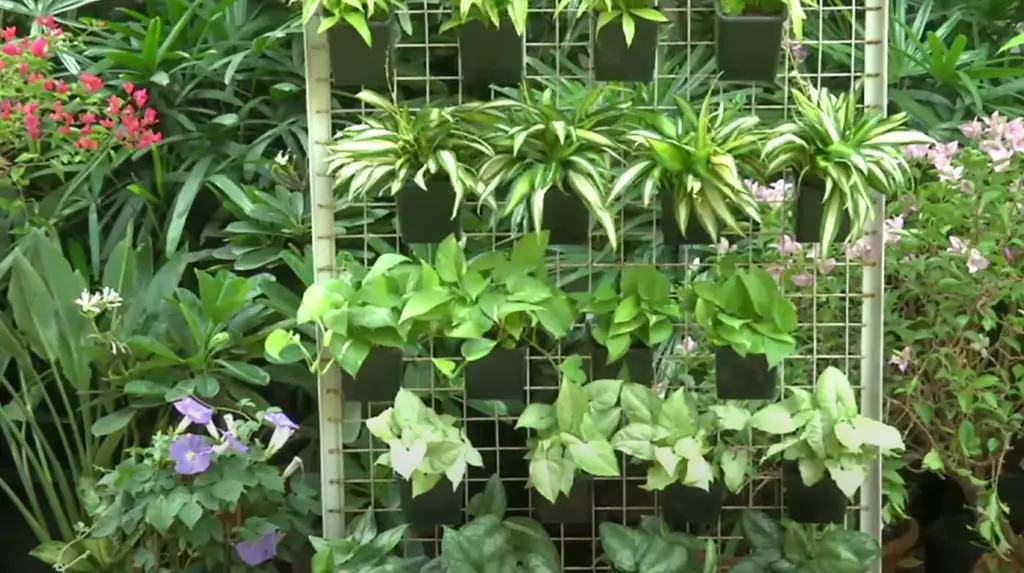
There is not one perfect way to choose a container for your plants. You can choose a container based on the type of plant you are growing – annuals, perennials, vegetables, or herbs.
Vertical gardening is a great way to add life and color into your home. There are different methods that you can use to grow plants, depending on the size of the space available.
This way, the plants don’t touch ground when placed on top of each other.
If you are growing plants that need a lot of water, like herbs or veggies, you will need to make sure your containers have drainage holes. This will help the water escape so the plant doesn’t get too wet and die. You’ll also need to water more often than if you were growing plants that don’t require as much water. [1]
Exterior Vertical Gardens
Vertical gardens are becoming more popular as people look for ways to have beautiful gardens without taking up a lot of space.
Vertical gardening is a great way to make use of small spaces, add interest to dull walls, and bring the outdoors in. Before you start building your vertical garden, it is important to understand the basics.
Here are a few things to keep in mind as you plan your vertical garden:
- Choose the right plants: Not all plants are suitable for vertical gardening. If you want to make a living wall, look for plants that are small and have shallow roots. This will help them stay together and not take up too much space. Succulents, herbs, and annual blooms are all good choices.
- Consider your light: Vertical gardens can be placed in full sun, partial sun, or full shade. Choose plants that will do well in the amount of light you have available.
- Think about water: Vertical gardens are a great way to save water. Make sure to choose plants that don’t need a lot of water. If you are growing edibles, remember that they need to be watered more frequently.
- Plan for maintenance: Vertical gardens can be low-maintenance, but they will still need some care and attention. Make sure you water, fertilize, and prune your plants regularly.
With these things in mind, you’re ready to start planning your vertical garden. Here are a few of ways to grow vertically:
- Hanging baskets are one of the simplest and most popular ways to add a vertical garden to your home. They’re perfect for small spaces and can be placed just about anywhere there’s enough sunlight. Just make sure you choose plants that don’t mind being root-bound, and be prepared to water them frequently.
- Wall planters are a great way to add a pop of color to your outdoor living space. They come in all shapes and sizes, so you can easily find one that fits your style. Just make sure you choose a sturdy wall planter that can support the weight of your plants.
- Trellises are a classic choice for vertical gardening, and they’re perfect for climbing plants like vines and roses. There are many different types of birdhouses. You can choose to make one from wood, metal, or plastic. It can be as simple or elaborate as you like. Just make sure the trellis is firmly anchored in the ground so it can support the weight of your plants.
- Window boxes are a great way to add a vertical garden to your home without taking up too much space. They’re perfect for small apartments or homes with limited outdoor space. Just make sure you choose plants that don’t mind being root-bound, and be prepared to water them frequently.
With so many choices, it’s easy to get overwhelmed when planning a vertical garden. But with a little planning and some helpful tips, you’ll be on your way to growing your own vertical oasis in no time. [1]
Vertical Succulent Gardens. Maintenance.
When it comes to vertical succulent gardens, you need to think about two things: the size of the plants and their root system.
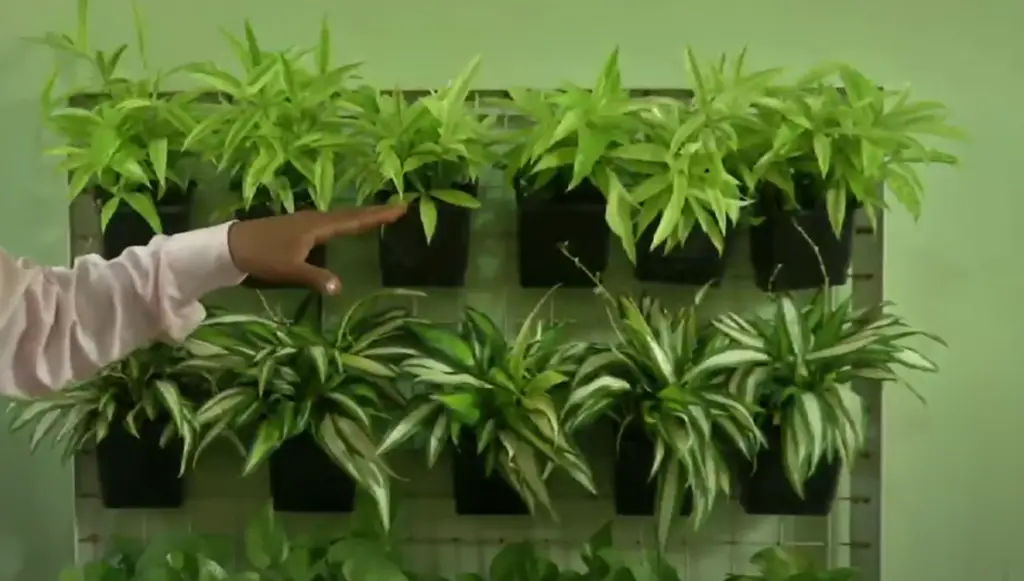
The size of your plants is important because they should be proportionate to the container. If you are using a small pot, choose smaller plants. If the pot or other container is large enough, you can choose larger plants.
To keep your garden vertical, choose plants with shallow roots. If a tree has a deep root system, then it can grow big and tall. But if it gets too heavy, the top part of the tree might fall over. This could damage other plants near the tree.
Vertical succulent gardens are a great way to bring nature indoors and provide your home with the perfect accent piece. Some plants do well in dry conditions and can be used in these types of layouts. Sedums, sempervivums (or speedwells), and echeverias are all examples of plants that can thrive without getting water often.
If you don’t feel confident about taking care of a new plant, there are many online retailers who sell ready-made succulent kits. These come with everything needed to get started including pots and planting mix as well instructions for caring for them properly!
Once you have planted your plants, give them plenty of water to get started. You should space the plants out evenly so that the roots will have enough room to grow and spread through all of them. This will help everything grow well together.
To plant, simply remove the plant from its pot and gently loosen any roots that are stuck in dirt. Before you place your seeds into some fresh compost or soil, make sure to carefully arrange them across your workspace so there’s room for them to grow! After you have planted all of your plants, give them a watering solution/water bottle. Keep the plants in a bright area while you are doing this.
It’s easy to water your plants too much, but it is important not to do so. The succulents were bred for the desert climate they live in and over-water can actually kill them!
The best way to water your vertical succulent garden is with a spray bottle or mister. It will help keep the roots from getting wet, and you can easily apply more if needed!
Water your plants once a week, or when the potting mix is dry. If you live in a hot, dry climate, you may need to water more often.
Now that you know about vertical succulent gardens, it is time for you to make your own! With a little planning and care, you’ll have a beautiful garden that will last for years to come. [1]
Why are Vertical Gardens Perfect for Indoor Spaces?
Vertical gardens are a great way to add greenery, natural beauty and even fragrance in your home. You can choose from various methods such as shelves that fit on top of one another or pots hanging from hooks!
Succulents and air plants are a great option for those with little space. They don’t need much soil, so you can easily find room in your home or office! The plant only needs water when necessary. Even then, some varieties can do well without any water at all. So the plant is perfect if you don’t have a lot of time but still want something beautiful to look at.
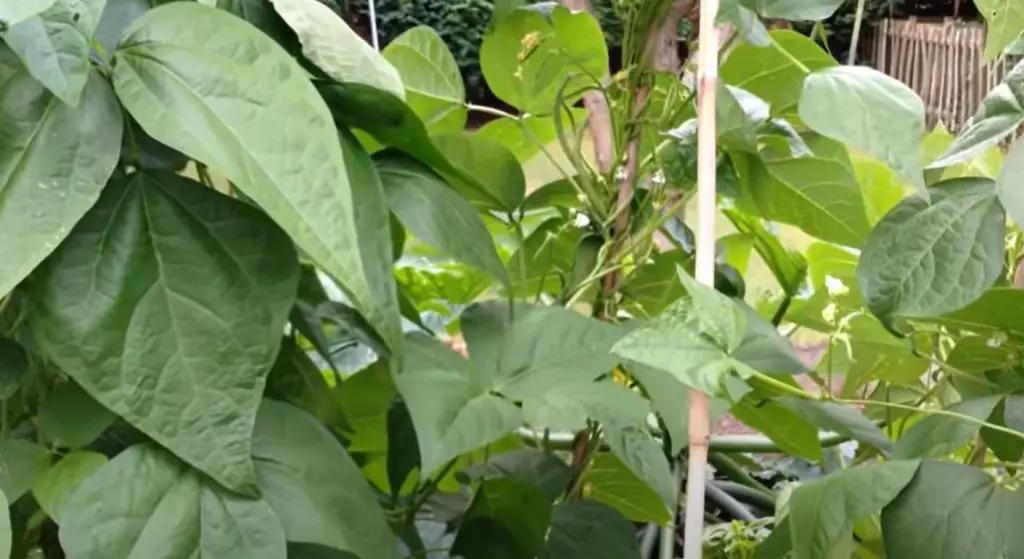
Vertical gardens are a great way to grow your own produce. You can get fresh tomatoes, peppers or herbs in many different shapes and sizes. The payoff for these plants is much higher than with succulents. They need more care, but if you don’t mind spending the time to take care of them, then they’re worth it.
If you’re looking to create a green thumb in your home, then vertical gardens are the perfect choice. You can make your own garden any way you want. You can choose the plants you want, and no one will tell you what to do. [1]
Types of Vertical Greening System
Vertical gardens are all the rage these days, with living walls being one type of vertical greening system. A ‘living wall’ is a great way to add some greenery to any space. You can make them as simple or elaborate as you like, depending on your needs and creativity.
Other types of vertical greening systems include:
- Green roofs
- Vertical planters
- Window boxes
- Trellises
- Hanging baskets
Vertical gardening is a great way to add color and life to your home or office. You can do it by using plants that grow on a wall. This way, you won’t take up any floor space.
And, with a little planning, it can be surprisingly easy to do. If you’re a beginner or an experienced gardener, you’ll want to read on for everything you need to know about growing vertically. [2]
Benefits of Vertical gardening
Vertical gardens are perfect for people with small yards or balconies. They also make great spaces for people who want to start gardening. With vertical plant stands, you’ll never again have a shortage of fresh produce at your fingertips!
When plants grow close together, they create shade. This prevents the plant from getting too hot and losing moisture from the soil. The soil can then be reused by the next group of plants.
Vertical gardens are a great way to improve your home’s air quality and get fresh natural light into dark spaces. The plants help to get rid of harmful pollutants and also make the area more beautiful. This will make you feel like you’re living in paradise!

Vertical gardens are an excellent way to get creative and show your kids how much fun gardening can be. You can keep the little ones interested in vertical plants grown if you use containers or holders that they will like, like these. [2]
FAQ
What are the Types of Vertical Gardening?
Vertical gardens are a great way to grow your favorite plants without the need for more space. You can get creative with what you use, from pots and containers of all different shapes & sizes!
Trellis gardening is a great way to grow your plants in small spaces, like on trellises or other supports. It can add some beauty and texture for an ornamental touch near any garden!
Hydroponic systems are a great way to garden if you don’t have a lot of space or time. They use water instead of soil, so they’re perfect for people who are short on time or don’t have a lot of room. The plants grow vertically without any need for broadacre farming.
What is a Vertical Garden Called?
Vertical gardens are a great way to add beauty and uniqueness into your home or outdoor space. This type of gardening is useful because it doesn’t take up a lot of space. You can use the extra space for other activities, like playing sports with friends.
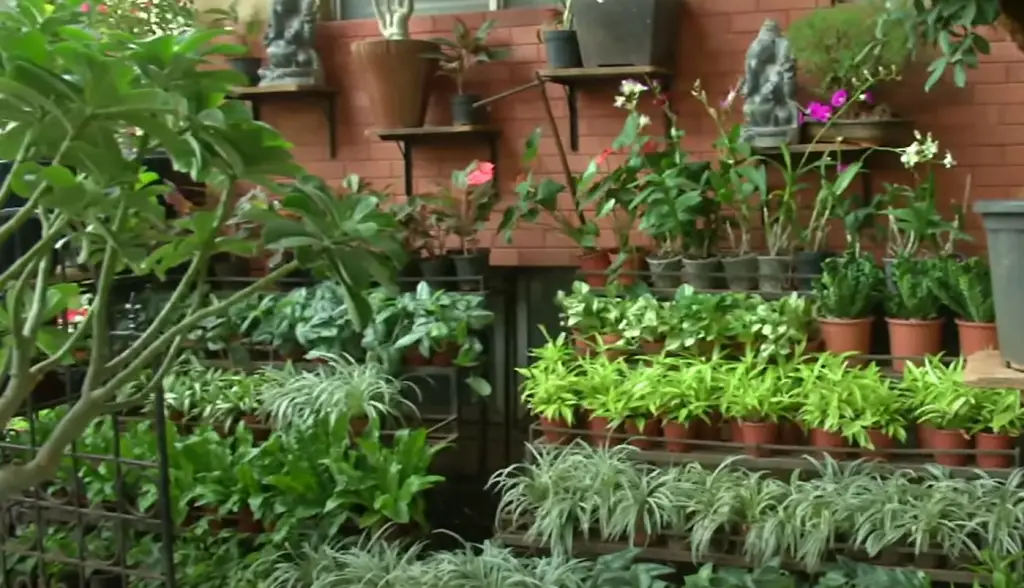
It’s not just about the size of your garden, it’s how you make use out of them that matters. Vertical gardens are a great way to add some life to a space that needs it. You can buy a pre-made one or make your own using recycled materials. Just make sure you create a unique design so it fits the space well.
What is the Difference Between Horizontal and Vertical Gardening?
Vertical gardening is perfect for those who have limited space. One of the most popular types of gardens is a vertical garden. You can do this in many ways, including using trellises or shelves to support plants high off the ground. This can create an interesting look when they are lined up side by side!
Vertical gardening is the more modern type of garden, where plants are grown up and out away from ground level. This method of gardening is less space-consuming than horizontal gardens, and it can be easier to care for because all the plants are at the same height. This means that you won’t need to water them every day or week like with horizontal gardens. Plus, you’ll get a lot of vegetables from this garden.
What Does a Vertical Garden Need?
In order to grow a healthy and thriving vertical garden, you’ll need a few key things:
- Sunlight: Vertical gardens need at least six hours of direct sunlight per day in order to flourish. If you’re growing indoors, make sure to place your garden near a sunny window.
- Water: Your plants will need to be watered regularly, so make sure you have a reliable source of water nearby. If you have a small garden, a hose or watering can will work well. If you have a large garden, you may need an irrigation system to water all the plants.
- Soil: Use a potting mix that is light and airy, like one specifically designed for container gardening.
- Containers: Choose containers that are big enough for the plants you want to grow. Larger plants need larger pots, while smaller plants can grow in hanging baskets or window boxes.
- Plants: Select plants that are well-suited to growing in a vertical garden. Vines, succulents, and herbs are all good choices.
With these things in mind, you’re ready to start planning your vertical garden! Here are a few tips to get you started:
- Pick a sunny spot: To make a vertical garden, you need to choose a spot that gets at least six hours of direct sunlight each day. If you’re growing indoors, place your garden near a sunny window.
- Water regularly: Water your plants thoroughly, making sure to wet the roots and leaves evenly. If you have a garden with a lot of plants, or if the plants you are growing need a lot of water, then you will need to water them every day or multiple times per week.
- Fertilize: Feed your plants every two weeks with a water-soluble fertilizer to help them grow strong and healthy.
Are Vertical Gardens Hard to Maintain?
No, vertical gardens are not hard to maintain. In fact, they can be quite easy to take care of if you follow a few simple tips.
- First, make sure that you water your plants regularly. Vertical gardens need more water than traditional gardens because the plants are growing up instead of out.
- Second, fertilize your plants every few weeks to help them grow strong and healthy.
- Third, prune your plants regularly to keep them from getting too big and unmanageable.
What Soil is Best for a Vertical Garden?
One of the great things about vertical gardens is that they can be grown in a variety of soil types. Whether you’re using potting mix, topsoil, or even garden soil, your vertical garden will thrive as long as it’s well-draining.
That said, there are a few things to keep in mind when choosing the right soil for your vertical garden.
- First, make sure the soil you choose is light and airy. Soils that are too dense will compact over time, which can lead to drainage problems.
- Second, if you’re growing in containers, be sure to use a potting mix rather than garden soil. Potting mixes are designed to provide nutrients to plants that are in containers.
- Finally, if you’re growing in an area that doesn’t get a lot of natural light, you may want to consider using a soil mix that’s high in organic matter. This will help your plants grow strong and healthy roots.
What Can I Plant in My Garden Wall?
The options for plants are endless when it comes to vertical gardening. Not all plants are created equal when it comes to this type of gardening. Some plants are better suited for vertical growth than others. When choosing plants for your vertical garden, consider following:
- The plant’s size and shape. Vertical gardens are often space-saving solutions, so choose plants that won’t grow too large or spread out.
- The plant’s rooting system. Plants that have deep taproots are not ideal for vertical gardens because they will have a harder time getting the nutrients they need from the soil. Look for plants with shallow root systems that can easily spread out in the limited space available.
- The plant’s watering needs. Vertical gardens can often be on the drier side since water drains down more quickly than in traditional gardens. Choose plants that don’t require a lot of water or are drought-tolerant.

Some great plants to consider for vertical gardens include:
- Herbs: parsley, oregano, basil, cilantro
- Succulents: aloe vera, Sedum, Sempervivum
- Vines: ivy, grape vines, morning glories
- Flowers: petunias, impatiens, nasturtiums
What are vertical gardens good for?
Vertical gardens are a great way to maximize space in your garden, create privacy and add visual interest. They can be used to grow a variety of plants, from edible crops to ornamental flowers and shrubs. In addition, vertical gardening allows for more efficient use of water, as the vertical orientation creates a more efficient absorption system compared to traditional ground-level planting. Vertical gardens can also help with temperature control in hot climates by providing shade and windbreaks. Finally, vertical gardens can bring nature closer in urban settings where space is limited.
How do you make a vertical garden?
Vertical gardening is a creative garden design method that allows for the cultivation of plants in limited space. It involves growing plants up, instead of out, and requires the use of trellises, netting, stakes or other support structures. This type of gardening is ideal for small spaces such as patios and balconies. Plants are grown side by side or in layers on tiers to maximize space and create an interesting display.
To make a vertical garden, begin by determining what types of vegetables or flowers you’d like to grow. Choose varieties that have shallow root systems and which can withstand light frosts if needed. Then decide where your vertical garden will be placed so it receives adequate sunlight throughout the day.
Once your location is determined, you’ll need to decide on a support structure. This could be anything from hanging planters, lattices or wire frames to PVC structures, trellises and even old ladders. Be sure to purchase plant containers that are appropriately sized for the structure you choose.
You’ll also need potting soil and fertilizer for your vertical garden. Once you have all of your supplies ready, it’s time to begin planting! Follow the instructions provided by your plants’ seed packets and fill each container with soil. Water each container thoroughly before adding your seeds or seedlings. Carefully lay out the plants in their containers across the structure so they can receive adequate sunlight and airflow. Add additional potting soil and fertilizer as needed.
What are the pros and cons of vertical gardening?
This type of gardening has become increasingly popular among home gardeners and can be used for many types of plants, including vegetables, flowers, herbs, and more.
Pros:
- Utilizes limited space efficiently – Vertical gardening allows you to fit more plants into an area than traditional gardens do by utilizing height as well as width. It also helps create a denser canopy that can provide shelter from sun and wind.
- Easy to maintain – Vertical gardens are usually easier to maintain than traditional gardens due to their smaller size and the ability to access them more easily.
- Aesthetically pleasing – Vertical gardens can be aesthetically pleasing as they create beautiful living walls and help break up large, open spaces in small gardens.
Cons:
- Can require more water – Due to their height, vertical gardening may require more frequent watering than traditional gardens do. Be sure to keep an eye on your plants’ soil moisture levels so that you don’t overwater or underwater them.
- Potential for disease and pests – With close proximity between plants, there is a greater chance of diseases and pests spreading throughout the vertical garden if not carefully monitored. It is important to check all plants regularly for signs of infestation or disease.
- Must be sturdily structured – Vertical gardens must be securely and safely constructed in order to keep plants from falling or breaking, as well as to support their weight. Make sure the structure you build can handle the load of your garden!
How hard is it to maintain a vertical garden?
Maintaining a vertical garden is not difficult, but it does require regular attention and care. Watering is important to maintain the health of plants in a vertical garden. Depending on plant types and environment, you may need to water the garden more or less regularly. You should also make sure that the soil stays moist enough for your plants to thrive without being over-watered. Additionally, it’s important to check for weeds and pests that can cause damage to plants in a vertical garden. To keep your vertical garden healthy, prune extra growth or dead foliage as needed and use fertilizers suitable for your specific plants. When done correctly, maintaining a vertical garden can be an enjoyable and rewarding experience!
In addition to regular maintenance, it’s important to consider the design of your vertical garden. Consider factors such as location, size, type of plants and climate when designing a vertical garden so that it can support the types of plants you want to grow. Additionally, make sure your chosen space has enough sunlight for your plants to thrive. With careful planning and maintenance, vertical gardening can be an easy and enjoyable way to bring nature into any living space!
Where should a vertical garden be placed?
Vertical gardens can be placed on any vertical surface, such as a patio wall or fence. They can also be hung from upper balconies and decks, or built directly into walls. Vertical gardens are especially popular in urban areas where space is limited, since they allow gardeners to make use of otherwise empty surfaces. With the right setup, a vertical garden can provide plenty of green space in an area that would otherwise remain bare.
When deciding on a location for your vertical garden, keep in mind that plants need sunlight and water to survive. Make sure the chosen spot gets at least six hours of direct sunlight per day, and consider how you will water the plants once they’re installed. Using a drip irrigation system or other low-maintenance watering system is usually a good choice for vertical gardens.
How long do vertical gardens last?
Vertical gardens are relatively low-maintenance and should last as long as the plants that make up the garden. Depending on the species of plants used, a vertical garden could last several years or even decades. With proper care and maintenance, some vertical gardens have been known to thrive for many years in both indoor and outdoor settings. Additionally, the panels of a vertical garden can be replaced or changed over time to give it a fresh look without having to start from scratch. Ultimately, how long your vertical gardening project lasts will depend on its particular set up, but with proper care you should expect it to last for many years.
How often should you water a vertical garden?
Watering a vertical garden depends on several factors such as the type of plants you have, the climate, and the amount of direct sunlight your garden receives. Generally, it’s best to water in the morning when temperatures are cooler so that less moisture is lost due to evaporation. Water deeply enough that it reaches the roots of all plants in the garden. Monitor soil moisture levels regularly to help determine how much and often you should water—it may land between 2-3 times per week during warmer periods or once every 1-2 weeks in colder months. Additionally, consider adding mulch around plants to help retain moisture for longer periods of time.
What materials are needed for a vertical garden?
Vertical gardening is a creative way to use garden space by growing plants in a vertical fashion rather than on the ground. To make your own vertical garden, you will need some basic materials:
- A wall or trellis for support. You can use walls, fences, or any other structure that can provide a stable foundation for your plants.
- Hanging containers such as plastic planters and hanging baskets. These are perfect for trailing plants like vines and ivy, but you can also find specially designed containers that allow multiple plants to be grown in one spot if you prefer.
- Growing mediums such as soil or potting mix. This is where your plants’ roots will live, so it’s important to choose a medium with good drainage and air circulation.
- Plant supports such as trellis or wires. These help your plants stay secure and upright while they grow.
- Fertilizer, water and access to sunlight. All of these are essential for healthy plant growth in any garden, but especially in a vertical garden where the roots can’t spread out like usual.
By understanding the basics of vertical gardening and having the right materials on hand, you can create a stunning display of cascading plants that will transform your outdoor space!
Is it better to water the vertical garden in the morning or afternoon?
Vertical gardening is a technique of growing plants and vegetables in a vertical structure, such as on trellises, walls, fences or other support. It can be done in the garden, on balconies and rooftops—even indoors! When plants are grown vertically they take less space, create interest with height and texture, and are easier to manage.
In terms of watering your vertical garden, it’s best to water in the morning or early afternoon when temperatures are cooler. This will help reduce evaporation and ensure that more of the water reaches the roots of the plants instead of evaporating into the air. In addition to this, try to water at soil level rather than from above so as not to wet the leaves and encourage disease. Finally, be sure to water deeply and slowly so that the water has a chance to soak into the soil instead of just running off.
Useful Video: How To Make A Vertical Garden?
Conclusion
Vertical gardening is a great way to maximize your gardening space, whether you have a small balcony or a large yard.You can grow vegetables, fruits, flowers, and herbs in vertical planters of all shapes and sizes, making it easy to find one that will fit perfectly into your outdoor living space.
Vertical gardening takes up less space and makes growing your own food easier than ever before. With just a little bit of planning and some basic supplies, you can start enjoying the benefits of vertical gardening today.
Have you tried vertical gardening? What tips would you give others who are thinking about starting this type of garden?
References:
- https://www.ambius.com/green-walls/what-are-vertical-gardens/
- https://agritech.tnau.ac.in/horticulture/horti_Landscaping_vertical%20gardening.html





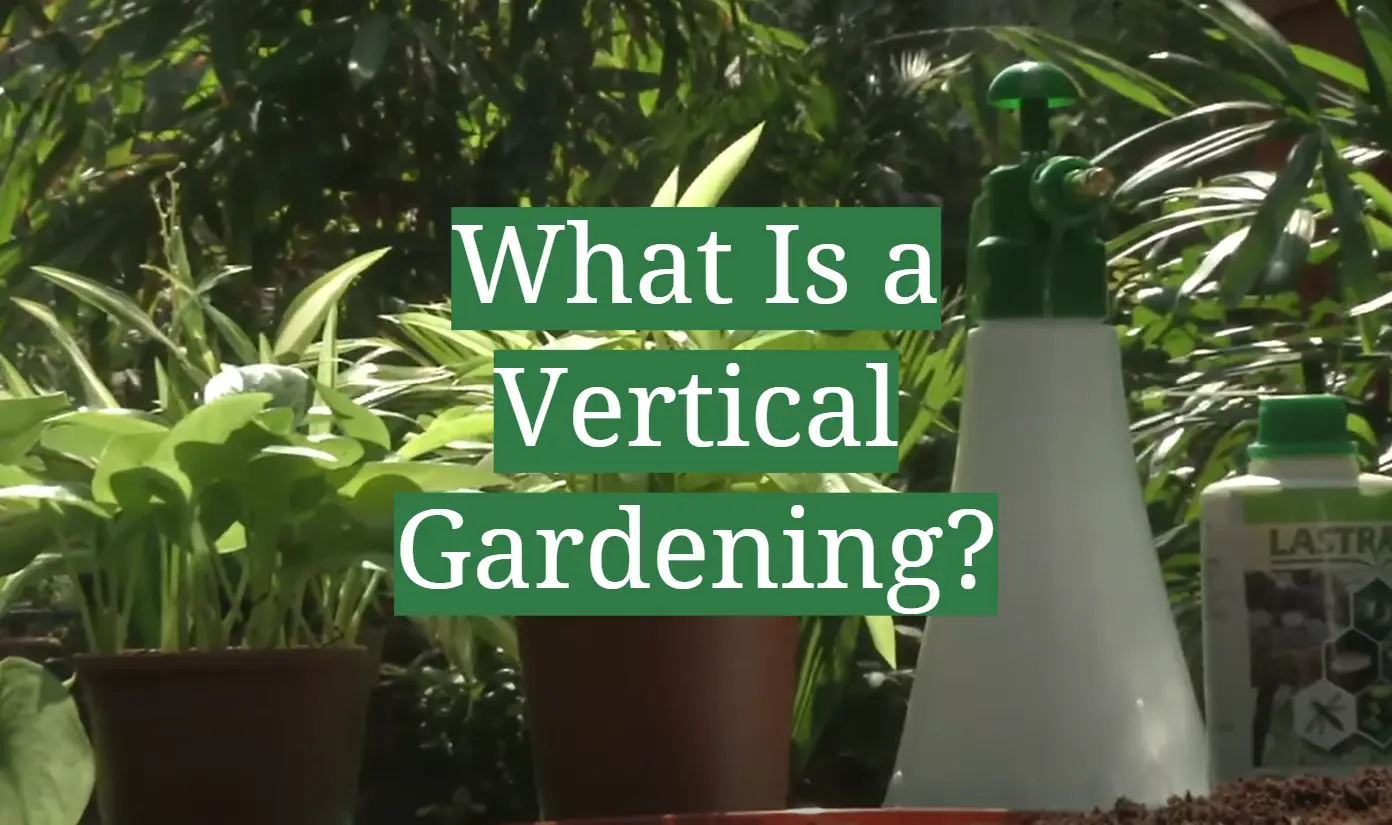




Leave a Reply
View Comments